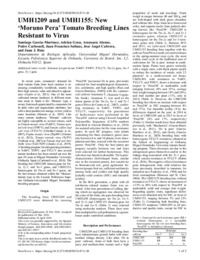Por favor, use este identificador para citar o enlazar este ítem:
https://hdl.handle.net/11000/36017Registro completo de metadatos
| Campo DC | Valor | Lengua/Idioma |
|---|---|---|
| dc.contributor.author | García Martínez, Santiago | - |
| dc.contributor.author | Grau Sánchez, Adrián | - |
| dc.contributor.author | Alonso Sanchis, Aránzazu | - |
| dc.contributor.author | Carbonell, Pedro | - |
| dc.contributor.author | Salinas, Juan Francisco | - |
| dc.contributor.author | Cabrera Miras, José Ángel | - |
| dc.contributor.author | Ruíz, Juan José | - |
| dc.contributor.other | Departamentos de la UMH::Biología Aplicada | es_ES |
| dc.date.accessioned | 2025-03-17T15:05:18Z | - |
| dc.date.available | 2025-03-17T15:05:18Z | - |
| dc.date.created | 2020 | - |
| dc.identifier.citation | HortScience Volume 55: Issue 6 959–960 | es_ES |
| dc.identifier.issn | 2327-9834 | - |
| dc.identifier.issn | 0018-5345 | - |
| dc.identifier.uri | https://hdl.handle.net/11000/36017 | - |
| dc.description.abstract | In recent years, consumers’ demand for fresh tomato fruits from local varieties is in- creasing considerably worldwide, mainly for their high sensory value and attractive appear ance (Casals et al., 2011). One of the most cultivated tomato landraces in different montane areas in Spain is the ‘Moruno’ type, a savory fruit much appreciated by consumers for its dark color and organoleptic attributes, but with a short postharvest storage, or low yield in some locations (Moreno et al., 2019). Like many tomato landraces, ‘Moruno’ cultivars are highly susceptible to several viruses, such as Tomato mosaic virus (ToMV), Tomato spot- ted wilt virus (TSWV), and Tomato yellow leaf curl virus (TYLCV) (Cebolla-Cornejo et al., 2007), Pepino mosaic virus (PepMV) (Gomez et al., 2012), Tomato torrado virus (ToTV) (Verbeek et al., 2007) or Tomato leaf curl New Delhi virus (ToLCNDV) (Juarez et al., 2019). A breeding program for introgressing resistance to ToMV, TSWV, and TYLCV into severalmtomato landraces has been carried out over the past 20 years at Miguel Hernandez University (Orihuela, Spain) (Carbonell et al., 2018). The breeding line UMH1209, homozygous for Tm- 2a, Ty-1, and Sw-5 genes, and UMH1155, homozygous for Tm-2a and Sw-5 genes, are the first releases obtained within the ‘Moruno’ tomato type in the Escuela Politecnica Superior Orihuela-Universidad Miguel Hernandez breeding program. | es_ES |
| dc.format | application/pdf | es_ES |
| dc.format.extent | 2 | es_ES |
| dc.language.iso | eng | es_ES |
| dc.publisher | American Society for Horticultural Science | es_ES |
| dc.rights | info:eu-repo/semantics/openAccess | es_ES |
| dc.rights | Attribution-NonCommercial-NoDerivatives 4.0 Internacional | * |
| dc.rights.uri | http://creativecommons.org/licenses/by-nc-nd/4.0/ | * |
| dc.subject | Solanum lycopersicum | es_ES |
| dc.subject | ToMV | es_ES |
| dc.subject | TSWV | es_ES |
| dc.subject | Tm-2a gene | es_ES |
| dc.subject | Sw-5 gene | es_ES |
| dc.subject | Ty-1 gene | es_ES |
| dc.title | UMH1209 and UMH1155: New ‘Moruno Pera’ Tomato Breeding Lines Resistant to Virus | es_ES |
| dc.type | info:eu-repo/semantics/article | es_ES |
| dc.relation.publisherversion | https://doi.org/10.21273/HORTSCI14711-20 | es_ES |

Ver/Abrir:
UMH1209 and UMH1155_ New Moruno Pera Tomato Breeding Lines Resistant to Virus.pdf
52,49 kB
Adobe PDF
Compartir:
 La licencia se describe como: Atribución-NonComercial-NoDerivada 4.0 Internacional.
La licencia se describe como: Atribución-NonComercial-NoDerivada 4.0 Internacional.
.png)